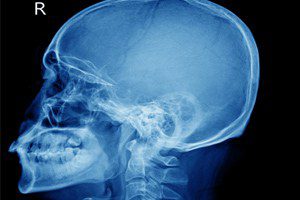
Brain Injury Patients Have A Long Road To Recovery: Car Accident Attorneys Discuss Head Injuries UNITED STATES – June 16, 2020 – According to an online article posted on biausa.org, a “Traumatic Brain Injury” encompasses a wide range of injuries. A brain injury can range from something relatively minor like a bump on the head […]

Head injuries in car accidents
UNITED STATES – June 16, 2020 – According to an online article posted on biausa.org, a “Traumatic Brain Injury” encompasses a wide range of injuries. A brain injury can range from something relatively minor like a bump on the head to a concussion, or to a more severe condition like a coma or paralysis. Some head injuries can result in death. If the victim of an accident is fortunate enough to survive a severe head injury, then the road to recovery can be long and arduous. The head injury victim may not make a full recovery, and they could be forced to live with the damage forever. Parker Waichman LLP works hard to obtain the monetary compensation our clients deserve in their personal injury claim against a negligent driver or corporation.
Head injuries frequently occur in car accidents. For example, a person could suffer a concussion in a car crash even if harnessed in a seatbelt. A car crash victim can suffer a concussion when the victim’s brain bounces off of the skull even if the person never struck their head on anything. Their sudden deceleration of the body will force the brain into the skull and rebound back. Fortunately, people can recover from a concussion. They might miss work for a few days. They will probably have difficulty sleeping but should make a full recovery.
Other accident victims are not so fortunate. For a more severe head injury, substantial medical intervention is required to treat the patient. That treatment begins with the first responders immobilizing the neck and protecting the victim’s head. Next, the trauma specialists at the hospital take over care of the victim in the Intensive Care Unit. In the ICU, emergency physicians and other healthcare providers try to stabilize the victim and bring the victim back from the brink of death. In the ICU, doctors and nurses will intubate the victim, meaning the doctors will insert a tube into the trachea of the victim to help the patient breathe. The patient might need a ventilator as well. Next, they will insert a Foley catheter to aid in waste removal. The medical team will also insert a feeding tube into the patient’s stomach to provide nourishment. Additionally, the staff must monitor the person’s heart rate and blood pressure. Consequently, the medical team will put the victim on an EKG machine. A severe brain injury can damage the brain stem, which will affect the victim’s ability to breathe. Additionally, the medical staff can monitor the pressure on the brain with leads used in conjunction with the EKG.
Once the brain injury victim is out of imminent danger of death, the victim will attend acute rehabilitation in an inpatient facility. The road to recovery from a brain injury is long and uncertain. The patient, if he or she is able, may begin physical therapy. Some might have to learn to walk again, use their hands, relearn language, and regain memory function. Other brain injury victims might never have the chance to do so. The road to recovery is long and will require hundreds of hours of physical and occupational therapy.
In addition to the intensive physical therapy regime, the victim will be forced to take a number of medications. Medications can include anticoagulant medications to prevent blood clots, pain relievers, anti-anxiety medication, and antipsychotic drugs.


